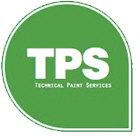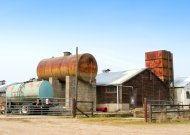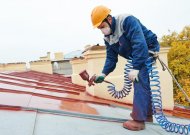Can I Paint in Cooler, Damper Weather
ADVICE FOR THE USE AND APPLICATION OF PAINTS AND COATINGS DURING PERIODS OF COOLER OR DAMPER WEATHER.
Introduction:
If you are considering applying paint or other coatings during a period of damp, cold or cooler temperatures, you should take all precautions to ensure your selected product does not fail. Failure will be caused by application at a temperature determined to be outside the optimum range (in this case ‘too cool’) by the manufacturer as set out in the associated Technical Data Sheet. Very often, users of paint products are under pressures such as timescale or budget to be able to fully consider temperature for application and importantly, subsequent drying and curing of the product and the effects on performance and finish.
As Autumn turns to Winter, bringing with it fewer hours of daylight and the likelihood of increased precipitation and frost, several factors must be considered when applying paints and coatings.
Substrate temperature (of the surface to be painted):
During late Spring and in the Summer months, a good rule of thumb is to plan your painting so that you are always working in the shade, so that substrate temperatures do not get too hot. In cooler months however, application in direct sunlight is the best practice to adopt as this will help increase surface temperatures up into the ‘safe’ range (15°C +) even when air temperatures are cooler. In general, paints should be applied only when both surface and air temperatures are above 5° – 10°C and primers should only be applied when temperatures are above 10°C in order that they dry properly.
In Winter, floors and metal surfaces will be several degrees colder than the air temperature and this should be factored into timescales and budgets; where practical, the use of heating systems should be considered to raise temperatures in the subject environment.
Generally, the best window of opportunity for painting in the cooler conditions of Winter is between 10.00 am and 14.00 pm, but this can be considerably shorter in marginal conditions. When working on external surfaces at this time of the year, dew is another factor to consider, both in the mornings and later in the day.
The paint or coating:
As temperatures drop, so the 'viscosity' (the property of a fluid that offers resistance to flow) of the coating will increase. This change in the paint will hinder the flow of the coating during application. Often, a small drop of thinners may help but it is recommended that before use, the paint is stored in a warm place (such as an airing cupboard or boiler room) or warmed very gently in warm water in a bath or bucket. If thinners are used, it should be noted that this action will reduce the solids content of the paint leading to a less durable and predictable coating. Water-borne coatings must not be allowed to freeze during transportation or storage as they will be damaged and become unstable; the effects of the freezing process are irreversible, and the paint must be disposed of without use.
It is also important that air temperatures do not drop below freezing the first night after paint has been applied, since curing paint can still contain moisture that will crystallize in sub-freezing temperatures, instead of evaporating out into the atmosphere as it is designed to do. If temperatures do drop, problems may very often not manifest themselves until the following Spring as moisture will remain ‘dormant’ over the Winter, becoming apparent in the paint in the form of blisters once the Spring sun has warmed the surface of the paint.
Humidity:
Relative humidity is harder to measure than temperature, but it plays an equally key role in the curing of the paint or coating. The ideal is 50% relative humidity, but curing times are significantly affected when humidity levels exceed 70%. In high-humidity situations, surfactant leaching may become apparent - brown or white discoloration on the surface of the paint. This can be rinsed off or may be left to wash away with day-to-day weathering.
Low relative humidity can also be a problem because the paint surface may dry too quickly and lead to blistering later. However, this is less common in the cooler temperatures of mainland Britain during our Winters!
Exterior painting in damp weather:
If you must paint during periods of showers due to your timescales, you are able to use our High Build Multi-Surface Paint in White & Pastel Shades, A1040. It can be showerproof in 15 minutes after application and will tolerate a light shower of rain for about 30-40 minutes. It can also be applied over render that’s only 6 weeks old and in temperatures down to 8°C in dry conditions. The paint must not be applied on to a wet surface or if rain is expected to fall on the surface directly after application.
Suitable for application to Plastisol coatings, cement rendering, concrete, K-Rend, Texcote, Brickwork, Aqua Board, Wooden or Cementitious Soffit boards, plus a broad spectrum of other surfaces such as Powder Coating, previously painted Metal, Metal Cladding and Timber surfaces when used with a suitable primer. It can also be used as a floor finish in low traffic situations. A1040 is available in a fine or medium Anti-Slip finish for floors. BS4800 and RAL Pastel Colours with Darker Colours to order. Selected colours available to buy online...![]()
Also available and suitable for use in damp conditions is our Acrylated Rubber, Damp Tolerant & Chemical Resistant Paint R1007. A fast drying, single pack paint which has mild resistance to a wide range of chemicals. This paint is easy to apply by brush, roller or spray. Suitable for use in damp or humid environments and is ideally suited for application in swimming pool enclosures, structures and pool halls on moisture resistant surfaces.
R1007 provides mild resistance to a wide range of chemicals, including acids, alkalis, inorganic salts, mineral oil and water. Ideally suited for application to general industrial situations, plant machinery, moist conditions and damp environments such as swimming pool ceilings, changing areas and plant rooms. Can be used for launderettes, dry-cleaners, veterinary clinics, milking parlours, stables, kennels and catteries. Can be painted on to wood, asbestos and on various metals via a suitable primer. White & Pastel shades in 5.0 Litres. Darker BS4800 colours and some RAL colours available in minimum of 50.0 Litres.
Final advice:
Always check in advance, ideally the day before, your local weather forecast. Your mobile smart phone will tell you the local temperature etc. ahead, and importantly on the day of intended use.
If the surface is wet with dew, this is a sure sign not to proceed. Never be tempted to wipe it dry and start painting otherwise the paint will absorb the moisture-laden air into the drying paint, creating unnecessary problems; so always WAIT.
Fast drying products such as Chlorinated Rubber, Two Pack types and most spray coatings, can suffer from ‘Cold Bloom’. This is caused by fast-drying solvents evaporating and chilling the surface onto which water condenses. Cease painting immediately if this happens and wait for warmer weather conditions.
In extremely hot weather, never paint in direct, strong sun or when air or surface temperatures exceed 30°C. This can ‘boil’ off solvent or water too fast preventing the required spreading and surface wetting from the coating. Therefore, always wait and paint when it is cooler.
When painting inside, in very cool or wet weather, always be careful if opening widows for ventilation, not to import cold moist air which can upset paints drying internally. This is particularly true for water-based paints as these conditions will prevent them setting/drying.
In summary:
Every Technical Paint Services product has an associated Technical Data Sheet; these can be found in several places on our website. Please look at this information for each product you are using and consider the environment in which you will be working, both internally and externally. Remember that during cooler weather, curing and drying are as important as application. Good planning and management will help enormously; very often it makes good sense to leave a project until warmer weather arrives.
To be certain of the right choice of product as well as the correct use and application instructions, please email or call us on 01202 295570 before placing an order.
The content of this page is available to DOWNLOAD HERE.







